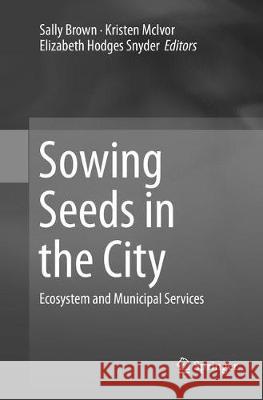Sowing Seeds in the City: Ecosystem and Municipal Services » książka



Sowing Seeds in the City: Ecosystem and Municipal Services
ISBN-13: 9789402413526 / Angielski / Miękka / 2018 / 407 str.
Sowing Seeds in the City: Ecosystem and Municipal Services
ISBN-13: 9789402413526 / Angielski / Miękka / 2018 / 407 str.
(netto: 575,06 VAT: 5%)
Najniższa cena z 30 dni: 578,30
ok. 22 dni roboczych
Dostawa w 2026 r.
Darmowa dostawa!
Sally L Brown is a Research Associate Professor at the University of Washington School of Forest and Environmental Science. She is a Fellow in the Soil Science Society of America, was a two- term member of the National Academy of Science Standing Committee on Soil Science and a member on the National Academy of Science Committee on the Bioavailability of Contaminants in Soils and Sediments. She has won multiple awards for her work on residuals use in soils. Dr. Brown writes a monthly column for Biocycle Magazine, a journal that focuses on sustainable management of organics. She has a BA in Political Science from Williams College (1980) and a MS (1993) and PhD (1996) from the University of Maryland. Before returning to graduate school, she worked as a chef in New York City, New Orleans and Connecticut. In 1986 she started a business delivering locally grown vegetables to stores and restaurants in New York City and Connecticut. She currently grows greens, onions, potatoes and currants on two plots near her home with the assistance of her husband and Tagro, the biosolids based soil amendment from Tacoma, WA.
1997-2025 DolnySlask.com Agencja Internetowa
KrainaKsiazek.PL - Księgarnia Internetowa









